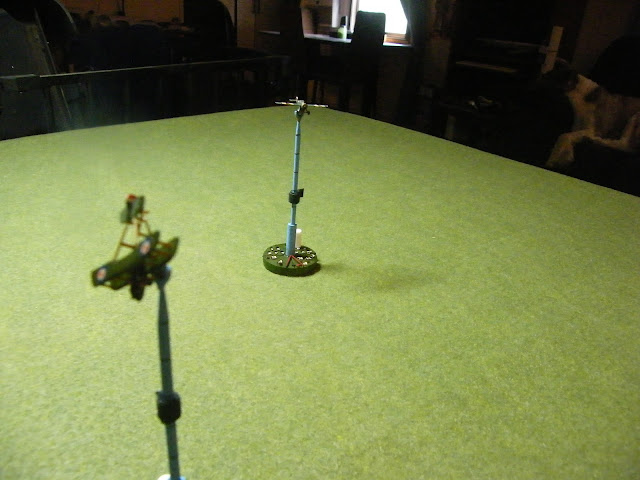I recently purchased the naval wargame "Naval Mania - naval warfare 1880-1905" published by 4P Press. For my first game, I selected the Battleship Pelayo of the Spanish navy to go against the USS Texas, a 2nd class battle ship.
Supplies required are pretty minimal, amounting to ship models, measuring devices, dice (d10s and optional D6), and smoke markers. The rules contain the Quick Reference Sheets and Fleet Sheets record sheets. Note; the turning circles shown come from another P4 Press game, "Contested Seas", but are not required for "Naval Mania" (however, I prefer using the turning circles).
The photo below shows the stats for the two ships.
The important factors to note are Target Profile, one measuure of the size of the ship. Texas, having a smaller profile would make it harder to hit. DPR is the waterline armor protection factor and is the same for both ships. WDF (waterline defensive factor) and UDF (upperworks defensive factor) describe a ship's ability to resist damage from enemy gunfire below the waterline(hull damage) and above the water (mostly gunnery, but also other ship's operations). For UDF, Texas greatly outranks Pelayo.
The Gun Ratings section describe the effectiveness of each battery of gun (Main, Secondary, Quick Firing, and Torpedo Boat defenses). It is this factor, compared against the WDF and UDF that determines the damage to the target. Note that Quick Firing guns are secondary guns that get to fire twice per turn, due to their rapidity of fire. Here, the Pelayo has an advantage with its main battery, but its paltry secondary battery will be useless in this battle. Texas, on the other hand, has a less effective main battery, But, due to Pelayo's lower quality UDF, gives the secondary battery of Texas a chance to contribute.
Pelayo
Texas
Turn 1
Pelayo wins the initive, so Texas must move first. so it turns to head straight for Pelayo.
Pelayo moves straight ahead.
Pelayo fires and misses. Texas shoots and holes Pelayo at the waterline and also scores a Well Targeted Fire result (or a critical hit). This knocks out Pelayo's pumps.
Turn 2
Both ships continue on a straight course.
Texas scores hits from both its main and secondary batteries, reducing Pelayo's UDF by 1. Pelayo shots missed again.
Turn 3
The Texas continues to close on the Pelayo.
Pelayo finally hits, but does no damage. Texas scores another upperworks hit on Pelayo reducing its UDF again.
Turns 4-7The ships begin to circle, slowly reducing the range.
Texas scores 4 more hits, but no damage was done. Pelayo scores 3 hits with no damage.
Turn 8
The ships contnue to circle.
Texas scores another upperworks cutting the voicepipes to the engineering room, so Pelayo hand to repeat its last order. Pelayo finally scores a telling blow, reducing the WDF of Texas by 1.
Turns 9-13
Pelayo regains control of its steering (passing a repair roll) and decides to retire from the well directed fire of theTexas.
During this phase of the battle, Texas scored 6 more hits, while Pelayo hit 3 times. None of these hits did any damage.
The game mechanics are easy to grasp, and in no time you won't need to refer to the rulebook, you can do everything with the quick reference sheets. Now, this game was played with, adnittedly, second class ships, but it was still a fun and quick moving game.
I highly recommend Naval Mania or Contested Seas for anyone looking for a quick and easy to learn game of late 19th/ early 20th century naval combat.





























